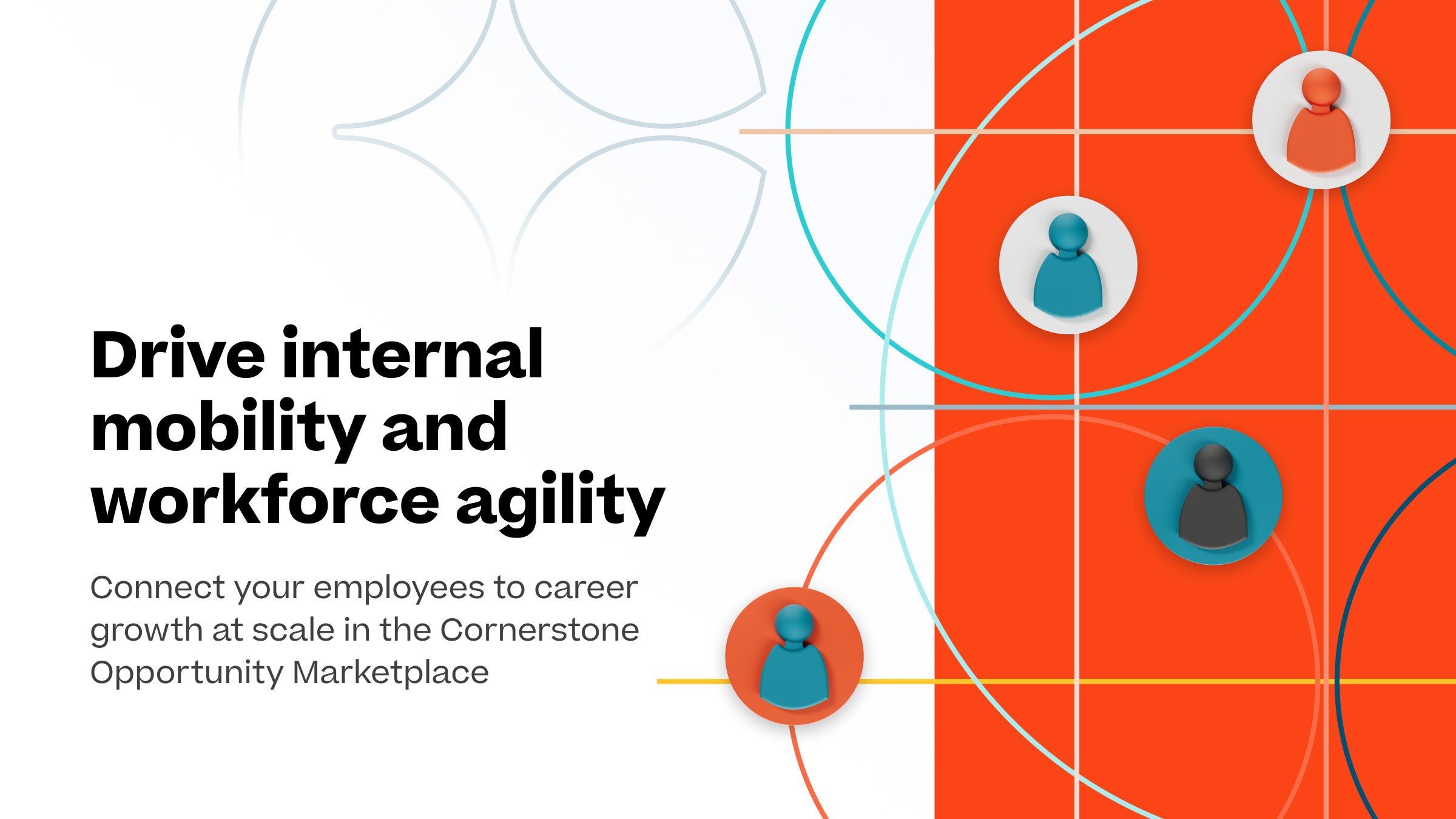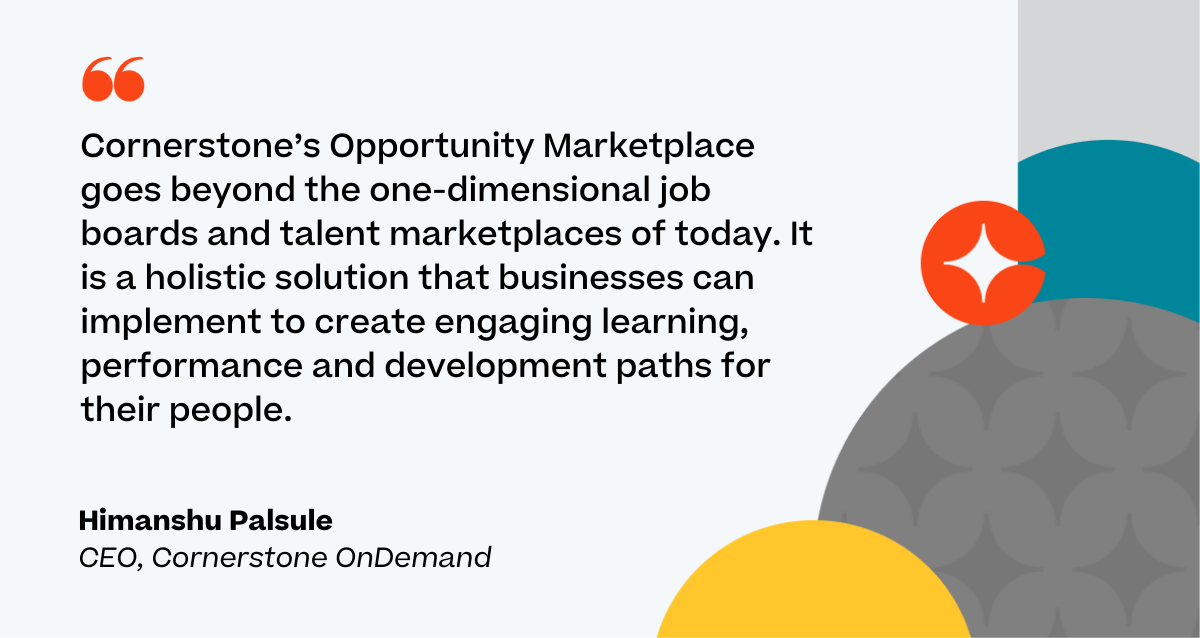From the employee-employer disconnect that’s arisen from widespread remote and hybrid working to trends like "the great resignation" and "quiet quitting" impacting employee satisfaction — it’s certainly been a bumpy ride for the workforce, globally.
Now, of course, widespread hiring freezes are creating further instability, pressure and unease. However, these hiring freezes should not be an excuse for companies to put a freeze on the progression of their existing employees. There is immense value in exploring internal mobility and talent sourcing.

As organizations strategize for the upcoming year, the focus is on how to keep their current workforces happy while attracting the best people to join them. Some talent leaders have decided to implement a hiring freeze and pause all new talent acquisition activities. Some common misconceptions about hiring freezes are that they only happen during complex macroeconomic conditions, leaving teams overwhelmed with the additional workload and managers grappling with how to forge a path forward. But when organizations implement a hiring freeze, they have an opportunity to focus on employee development and invest in their people. A pause on filling open positions can be a strategic part of an organization’s plan to recentre and refocus on company goals.
Challenges to managing, empowering and aligning workers
However, organizations need to be conscious of the fact that focusing on internal mobility can lead to internal pressures — particularly on managers, who are often at the center of conversations around employee progression and development. Our recent report Ready, Set, Grow: The Building Blocks for High-Impact Talent Mobility, found that 50% of frontline employees globally say that a supportive manager who provides career guidance and growth opportunities could turn around unsatisfactory work situations — so we cannot deny that managers play an important role in employee development.
Pressure managers face to continue hitting targets and ensuring their team is running successfully can however get in the way of driving talent mobility. It can also lead to substandard managerial practices, such as "talent hoarding". This is where managers hold on to their high-performing employees rather than promoting them or offering them the opportunities that they need to grow within the company. So perhaps leaning solely on managers to drive internal career mobility is no longer the best course of action.

Managing, empowering and aligning workers are critical components of any successful organization. However, there are common challenges that can impede progress in these areas, including a lack of investment in professional development. Furthermore, when labor is seen only as a cost to be minimized, companies may be reluctant to invest in training or development that could improve productivity or engagement. This can lead to workers feeling undervalued and even being more inclined to quit if they perceive that their workforce does not view their contributions as valuable. In an era of remote working, it is more important than ever to ensure that your workforce is happy and that human capital management is working smoothly. Remote workers may feel isolated or disconnected from the rest of the team, and managers need to ensure that remote workers are getting the support they need. With talent marketplace technology, like Opportunity Marketplace, businesses can quickly upskill or match employees to new opportunities and projects for greater workforce agility and employee satisfaction.
Employees globally have indicated that they prefer a self-service technology option 80% more than a conversation with their manager when it comes to understanding what career opportunities exist. Employees clearly want autonomy when it comes to sourcing career opportunities. So why not give them what they want?
Employee engagement is tied to progression
This is a time when employee loyalty and satisfaction are heavily linked to their ability to progress professionally, as well as having visibility into these opportunities. Our research shows that over 70% of workers are interested in learning about career growth opportunities during the hiring process, highlighting that employees expect visibility into career pathways from day one before they even join a company.

Improving workplace visibility and correcting the disconnect is essential for building a productive and collaborative work environment that has a low staff turnover. Providing opportunities for employees to develop their skills and expertise through training programs or coaching is a successful way to invest in professional development. Furthermore, fostering a culture of transparency by encouraging employees to see roles within the company can promote an environment where employees feel empowered and in control of their career path destiny. Naturally, this can significantly boost retention.
Employees’ desire for visibility doesn't stop once they start their new job — our research found that 73% of employees indicated an interest in learning about new roles inside their organizations. The problem is one in five employees in the study said they didn’t have visibility into career opportunities at their company, despite their interest. It’s clear organizations need to turn this around or risk disengaged staff who may even resign.
The emergence of opportunity marketplaces
In response to employee demand for visibility into internal opportunities, there has been an emergence of opportunity marketplaces over the last few years. Companies have seen many successes from the introduction of their platforms, with L’Oréal filling 75% of open positions with internal staff and Unilever redeploying 8,300 staff to high-demand areas of the business. In this way, the AI-powered technology behind these internal marketplaces is making it possible for organizations to connect employees with skills, opportunities and career pathways. By gathering and analyzing data about certain individuals, skills and job roles within the company, artificial intelligence can help HR leaders to manage their talent pools.

This technology can not only help boost any given company’s agility but also serve to boost employee workplace satisfaction. Importantly, opportunity marketplaces can also help soothe anxieties employees might have about future roles. If we look to the emergence of generative, for instance, and specifically ChatGPT — there’s been a huge amount of concerns around whether job roles will come under threat in the near future. Feeling anxiety about the future viability of your role can disrupt an employee’s working danger, impact their quality of work and even lead to feelings of apathy. A solution like an opportunity marketplace, while AI-powered itself, could play a crucial role in assuaging these sorts of fears by allowing workers to visualize their future career pathways.
Fueling workforce agility
For these many reasons, Cornerstone has launched Opportunity Marketplace, an innovation built on the foundation of EdCast. This AI-powered solution unifies skills, people and job data to connect employees to projects, gigs, learning pathways, mentorships and open roles that propel career mobility.
By empowering people with consumer-grade tools to take control of their own growth and career development, Opportunity Marketplace addresses some of today’s most urgent business challenges. The solution allows companies to:
- Drive internal mobility: Many organizations grapple with how to make learning and development equitable and accessible for all. Our research found that, globally, 47% of employees would be more satisfied if they had more opportunities to explore careers internally. An Opportunity Marketplace supports democratized access to talent mobility with self-serve technology.
- Strengthen workforce planning: By improving visibility into workforce skills, Opportunity Marketplace allows businesses to quickly upskill or match employees to other opportunities. This boosts workforce agility, allowing any business to quickly adapt to dynamic needs and market shifts.
- Boost internal talent sourcing: By increasing the transparency of the skills, experiences and preferences of a workforce, Opportunity Marketplace makes it possible for businesses to lean on their existing talent pool — sourcing employees for different positions. This unified platform encourages workers to seek out the projects and roles they’re interested in, providing hiring managers with qualified internal candidates who can be fast-tracked through the onboarding process.
- Reduce time and money: Quiet hiring can help companies save time and money by reducing the need for job postings and sifting through large volumes of applications. Instant access to real-time skills data helps tap internal talent to get the job done.
-test

Staying connected to career growth
For employees, opportunity marketplaces and internal mobility can help with many parts of their career journey, including:
- Professional development: Gain new skills that help them advance their career and the experience to grow their resume and portfolio. With research showing that 70% of the UK’s workforce were interested in upskilling, this cannot be overlooked.
- Increased market value: Expand their marketability and the opportunity to negotiate pay and title as they develop in various new areas, increasing employee satisfaction and improving retention.
- Hands-on experience: Expand knowledge in a new field and cross-train with other departments. The number one way that employees prefer to learn new skills is through their workplace experiences — highlighting their importance.
Opportunity Marketplace: A valuable tool for employee retention
Internal talent marketplaces can play a crucial role in facilitating connections between employees and their place of employment. It goes without saying, that when employees are engaged and feel more connected to their company, they have less reason to seek career progression or satisfaction elsewhere.
For additional information about the Cornerstone AI-powered Opportunity Marketplace, click here. To find out more about Cornerstone’s Talent Mobility study, click here.
To learn how to creatively conquer the business challenges of tomorrow and ensure your people feel passionate about work, download this eBook
co-authored by Dr. Edie Goldberg, an expert in the future of work and talent management.


